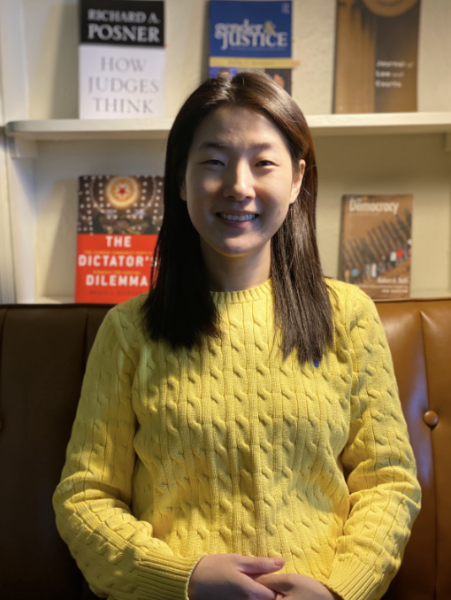Ten Lessons of Tagore: Eric Weiner on Rabindranath Tagore
Eric Weiner, New York Times bestselling author and self-proclaimed “Tagore-enthusiast,” spoke online to a diverse crowd of Moravian staff and students, as well as visitors from Bangladesh, China, India, Russia, and England, about the legacy of Rabindranath Tagore and why Tagore’s teachings are relevant today.
Rabindranath Tagore was a poet, philosopher, novelist, and social reformer born in Calcutta, India, in 1861. He is known for winning the Nobel Prize for Literature in 1913 for his collection of poems called “Gitanjali”. Tagore’s influence can be seen in India and Bangladesh, where his poems were turned into those countries’ national anthems — “Jana Gana Mana” and “Amar Shonar Bangla,” respectively.
Moravian College’s history with Tagore dates back to March of 2018, when the Rabindranath Tagore Distinguished Lecture Series was created, thanks to a collaborative effort by Uppinder Mehan, the former Moravian Dean of the School of Arts, Humanities, and Social Sciences, and Dr. Arup SenGupta, P.C. Rossin Professor at Lehigh University.
Since 2018, with the exception of 2020 due to COVID-related complications, Moravian has invited distinguished speakers every March to discuss Tagore’s legacy.
Those speakers included Dr. Shashi Tharoor, an award-winning author and the former Under-Secretary General for Communications and Public Information of the United Nations in 2018, and Gopalkrishna Gandhi, a diplomat and grandson of Mahatma Gandhi in 2019. In 2020, Weiner was supposed to speak in this event, until it was inevitably postponed due to COVID.
Weiner posed the question of why Tagore’s life and works matter to us nowadays, to which he responded with ten lessons.

Lesson One: Be Born in the Right Place at the Right Time
Weiner stressed the importance of Tagore’s birthplace, which he described as making Tagore the man he was. Weiner explained two myths of how geniuses are made, whether they are born as such, or if they become so because of hard work.
He proposed that geniuses are born depending on their location, and attributed this to clusters of regions that saw many geniuses at certain points in history. They include Athens, Greece in 450 B.C.; Hangzhou, China, in the 12th century, and Florence, Italy, in the 14th century, among others. Notice that all of the places listed are cities.
“If it takes a village to raise a child, it takes a city to make a genius,” Weiner said.
Close contact in cities allowed for brilliant ideas to be shared with equally-brilliant minds. Weiner goes into more detail about this in his book “The Geography of Genius: Lessons from the World’s Most Creative Places.”
Tagore’s birthplace of Calcutta was similar to the aforementioned cities of geniuses – a hub of ideas and innovation in the 19th-century Bengali Renaissance.
Lesson Two: Embrace Chaos
Weiner said that creative genius is usually a response to limited resources or constraints. Tagore’s life was difficult with the death of his mother at a young age, the deaths of his sister and his wife, and other familial problems. Such difficult times taught Tagore to be wise.
While Tagore’s family was wealthy, he acknowledged the proverbial double-edge nature of wealth in saying, “when material is in profusion the mind gets lazy. The world of play is spoiled for the unfortunate youngster who is burdened with an unlimited quantity of playthings.”
Lesson Three: Doodle
In the margins of his poems, Tagore made doodles. According to Weiner, doodles were akin to experiments, in which one “played” around to discover new things. This doodling led to Tagore discovering another passion in painting, which he would pursue much later in life.
“You never know where this doodling will lead you,” Weiner said.
Lesson Four: Be Open to Experience
In this lesson, Weiner explained that psychologists discovered that all creative geniuses are open to experience, and while it sounds simple on paper, most people are not open to experience.
Weiner said that most people often stay with their preconceived ideas and are very reluctant to change them. Tagore, however, embraced new ideas and used everything that he learned in his poetry. Tagore travelled a lot, which allowed him to make all sorts of discoveries that shaped the philosophy and ideals that he expressed in his creative works.
“Everything comes to us that belongs to us if we create the capacity to receive it,” Tagore wrote.
Lesson Five: Talk to Strangers
Tagore spoke to all people from various facets of life, ranging from the common man to profound figures in history like Albert Einstein and Mahatma Gandhi. In fact, Tagore was the one who gave Mohandas Gandhi the more commonly known name of “Mahatma” Gandhi, which meant “good soul”.
Lesson Six: See the World Through the Eyes of Others
“I don’t think you can be a good writer without having empathy,” Weiner said. “[Put] yourself in the shoes of others, [see] the world in the eyes of others. And I think the job of a writer is to both make the strange familiar, but also to make the familiar strange.”
Weiner warned that seeing the world with fresh eyes is important, especially in this day and age.
Tagore would sometimes imagine himself as a foreigner, for only then he could discover all that was seen. He would walk around and put Calcutta under this lens, and learn things that he would have otherwise missed.
Weiner suggested that all viewers do a similar thing — view the city from the perspective of an outsider viewing it for the first time and see what can be discovered.
Weiner pointed out the connection between immigrants and geniuses. Places like Calcutta and other cities of great intellect were as such due to the coalescence of people from different backgrounds with different ideas. Statistically, immigrants are more likely to be geniuses, something Weiner attributes to their being both outsiders and insiders. As an outsider, immigrants have the perspective to see things freshly, and as insiders they have the power to make changes.
This was Tagore as a whole; he was an insider and an outsider wherever he went.
Lesson Seven: Do Something
“Men of action shape their own lives; They fashion the rhythm of their lives,” Tagore wrote. “You [also] can’t cross the sea merely by standing and staring at the water.”
Weiner emphasized that Tagore took action and did things. He was not the type to sit and ponder, but rather he explored, learned from his travels, and documented that for the world through his poems, essays, activist work, music, and paintings.
Lesson Eight: Make Mistakes
“Any writer worth their salt knows the first revision is never the final revision,” Weiner said. “Chemist and scientist Linus Pauling, two-time Nobel Prize winner, was once asked [by] a student: ‘Dr. Pauling, how do you produce so many brilliant ideas?’ [Pauling] said, ‘It’s easy. I come up with lots of ideas and throw away the bad ones.’”
Tagore, like any other individual, was not immune from making mistakes. Tagore knew this and learned from his mistakes in order to develop new ideas.
Lesson Nine: Stay Humble
Tagore was confident in his work, so much so that some saw him as arrogant, according to Weiner. Despite this, Tagore was humble in that he knew his shortcomings. Tagore once said that he knew English well enough to know that he did not know it. He knew that ignorance was the driver of knowledge, and if one thinks he or she knows everything, then he or she will learn nothing.
Lesson Ten: Never Stop Learning
Weiner explained that Tagore began learning how to paint at age 60, and as he continued to work into his 70s and 80s, he produced over 2,000 paintings. This was in addition to all the traveling that he did.
Weiner said that if he was to choose only one piece of writing from Hindu scripture to sum up Tagore, he would choose a line from the “Rigveda” that reads as follows:
“Truth is one; the wise call it by many names.”
Everything was connected in Tagore’s mind – truth is one. All of his projects, whether poetry, philosophy, or activism, no matter the many names given to it by “the wise,” served to meet a single, lasting, and profound objective.








Jeff Csatari • Mar 24, 2021 at 4:01 pm
Good piece. I unfortunately missed the lecture, but this made me feel as if I hadn’t.